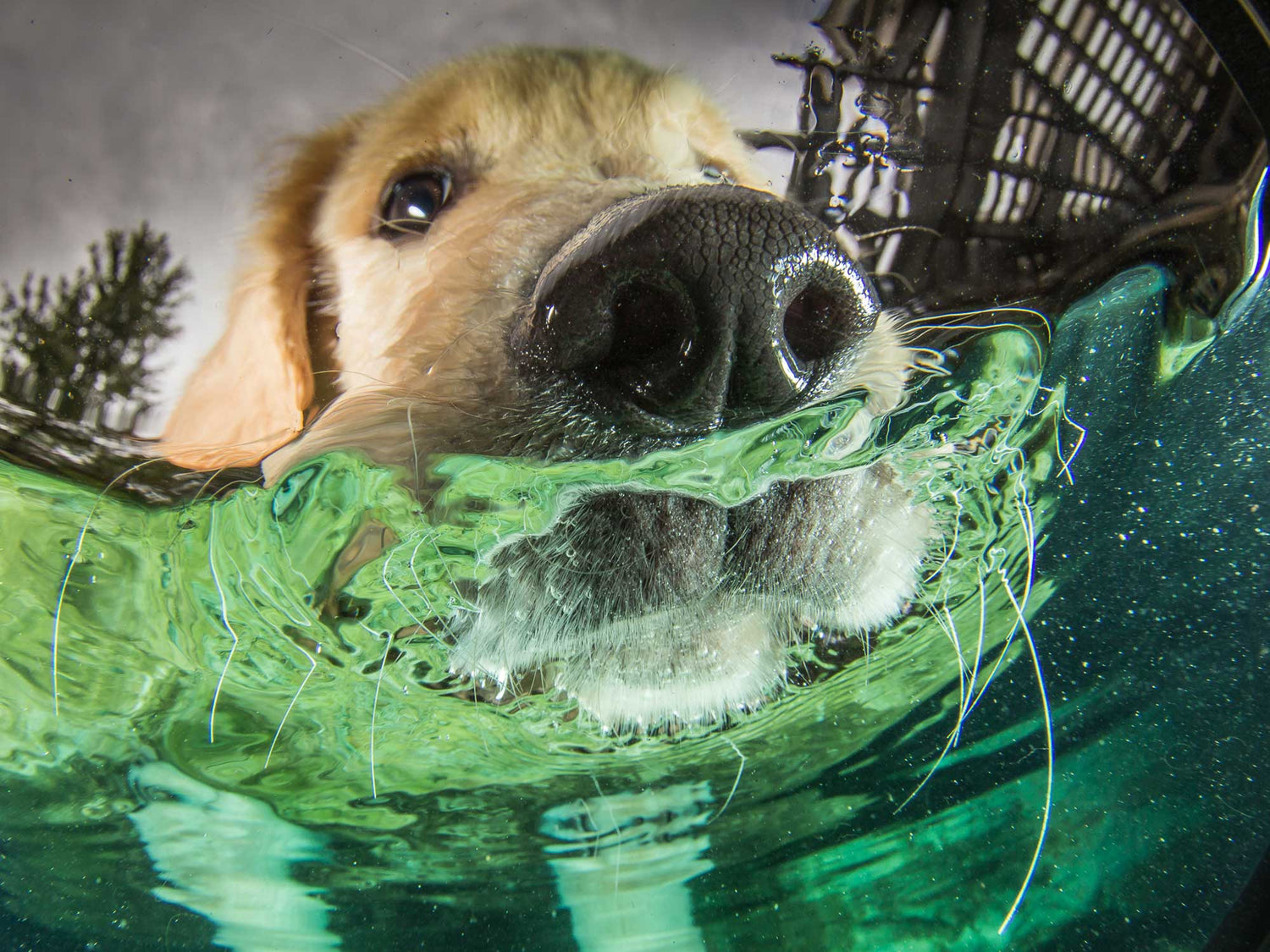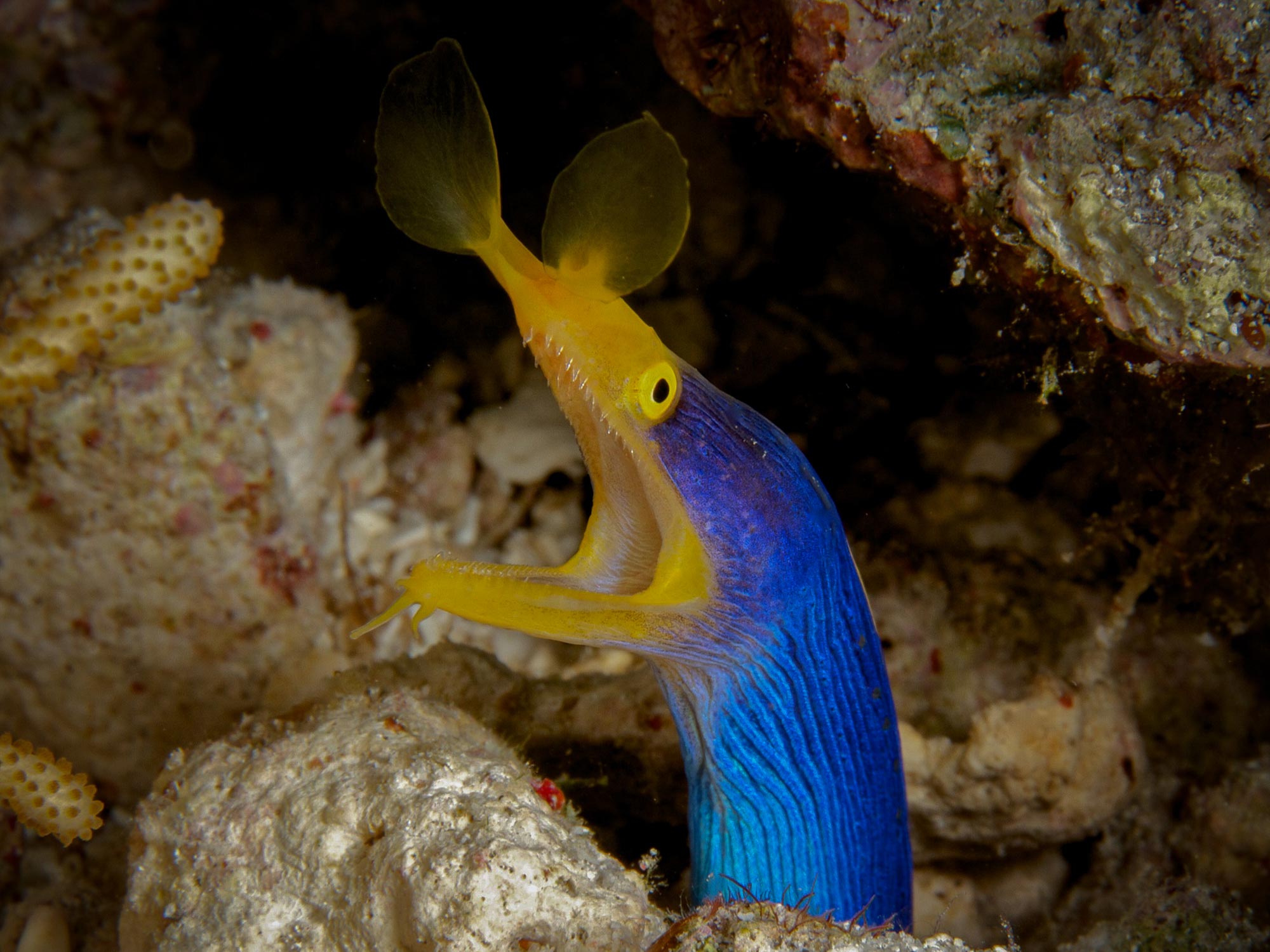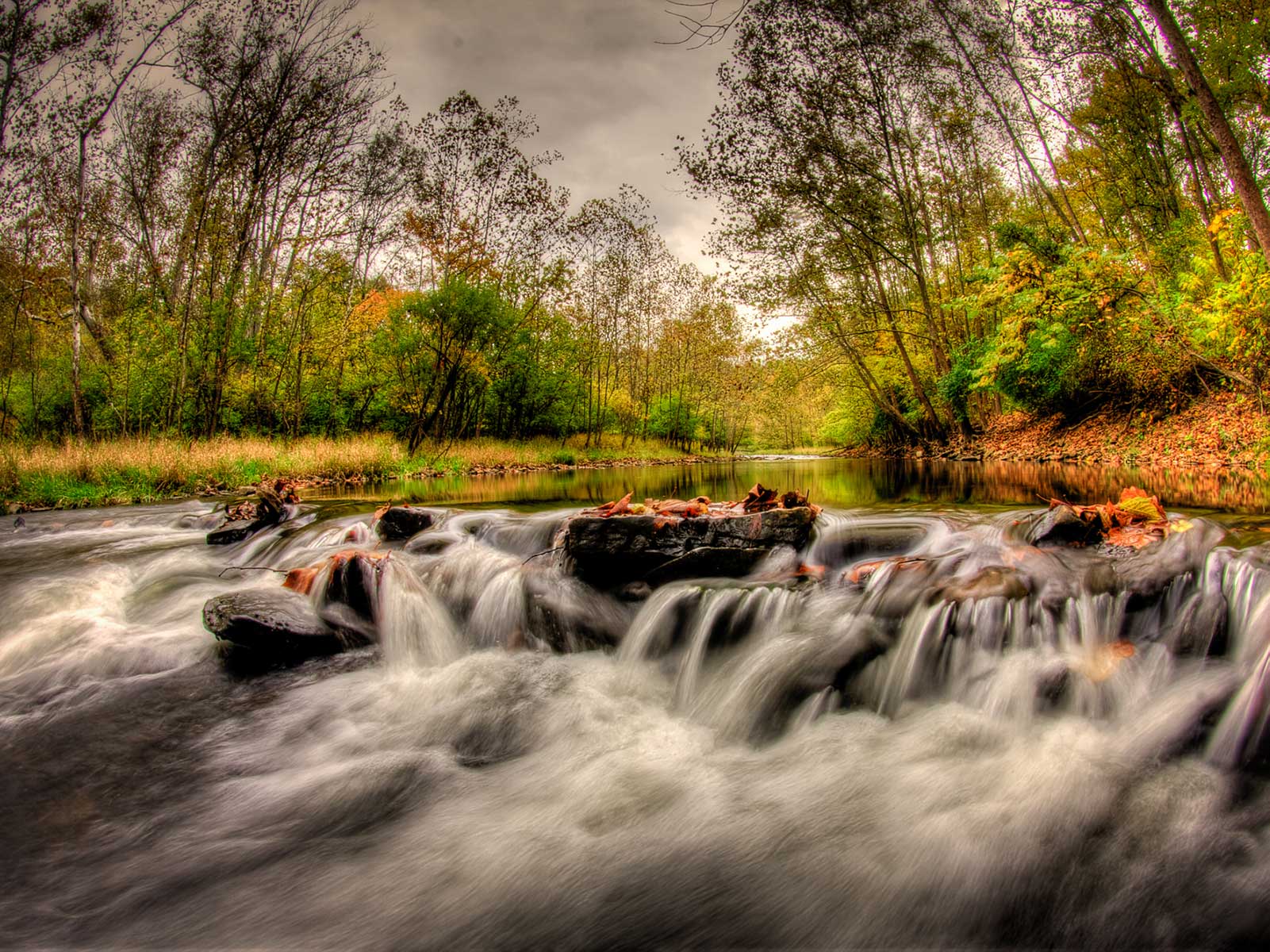There are two kinds of dogs, as far as underwater photographers are concerned - those who dive, and those who don't. Most dogs will happily chase and retrieve anything you throw into the water, but ones who will actually swim under the surface to fetch are what you want, and they are rare.
Whether you've got a golden retriever who loves swimming or a shy pup who'd make a better subject for a split-shot, use these tips to get you and your camera ready for their action.
Where
Diving dog competitions are popular recently and so are the pools used for the competitions. The beach or lakeshore can be perfect places for split-shots of your pup. Backyard pools are also great for dog photography because the water and visibility won't get stirred up. In a natural pool you will need to shoot for a few minutes, then wait for the water to clear - dogs are clumsy models.

f/13 • 1/125 • ISO 160 © 2022 Steve Miller
DSLR + Mirrorless
Mode: Manual for camera, set strobes to TTL.
ISO: 200-400. Low ISO for sharpness, we will probably be using flash so the ISO can be as low as you like.
Aperture: Stopping down the lens is often used here for wide angle, providing a great depth of field. Although rectilinear lenses are popular for this a fisheye will work great too, with the advantage of super fast focusing right up to the port.
Shutter Speed: 1/125-1/160 flash synch. If you are shooting natural light try to get your shutter speed up to 1/500th second or faster to stop the action. This may require raising your ISO.
Lens: 8mm to 35mm. Wide angle zooms give the best depth of field and allow you to get the whole animal even though the lens is only inches away from their nose.

f/16 • 1/160 • ISO 200 © 2022 Steve Miller
Point + Shoot
Mode: Manual or Aperture Priority. If you are shooting natural light Program will work as well, a focus light or dive light will help here.
ISO: 100 to 200. If you have no light or strobe expect to raise the ISO.
Aperture: F-8 will give you depth of field. Shutter priority with a fast shutter is a good choice for natural light.
Shutter Speed: 1/125 to 1/200 with flash, faster without.
Lens: Super wide fisheye lenses are a favorite here, they will focus quickly even at very close distances.

f/14 • 1/160 • ISO 100 © 2022 Steve Miller
Technique
Ideally, set yourself up on the bottom and have a friend toss a sinking toy right in front of you. Two strobes set up for close focus wide angle and set to TTL will allow you to shoot at any distance quickly.
Strobes
Strobes are key here, as they stop the action and fill in the shadows. If you are shooting split-shots the strobe will be invaluable. Don't worry about them being out of the water, submerged their light will travel up to the dogs face, even if it's dry.

F/16 • 1/160 • ISO 200 © 2022 Steve Miller
Ready to make a splash?
Check out Ikelite customer Timo Rettenmaier @klatschnassfotografie for some underwater dog inspiration pics then dive into this in-depth look at photographing dogs underwater. Email us today ikelite@ikelite.com for any questions about equipment, settings, and technique. Just don't forget to include photos of your dog!
Want the easy way to improve your underwater photography? Sign up for our weekly newsletter for articles and videos directly in your inbox every Friday:
Additional Reading
How to Photograph Dogs Underwater
Why You Need Strobes Underwater
When to Change Shutter Speed Underwater
Building the Next Generation Backyard Underwater Photo Studio













